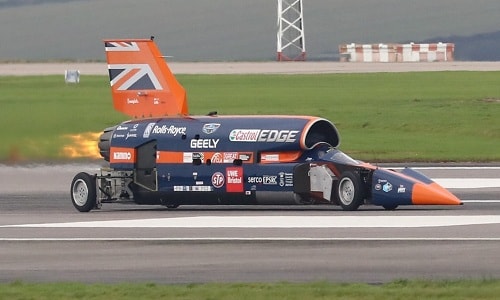1,600 km/h supercar prepares for testing in South African desert
Engineers building a supersonic car are rushing to prepare for a subsonic test run in South Africa late next year.
 |
Bloodhound Supersonic Car. Photo: New Atlas. |
The Bloodhound Supersonic Car (SCC) team has turned its sights to a dry lakebed in South Africa after a public test run in October in the hope of setting the world's fastest land speed record in 2020, News Atlas reported today.
The engineers’ long-term goal is to exceed 1,000 mph (1,600 km/h) and set a new land speed record, breaking the current mark of 760 mph (1,228 km/h). The vehicle, conceived nearly a decade ago and powered by a Rolls-Royce EJ200 turbofan engine with the thrust of 360 family cars, is getting closer to that goal.
1,600 km/h supercar prepares for testing in South African desert
SCC reaches 340 km/h in a few seconds. Video: Twitter.
Recent public tests at Cornwall Newquay Airport saw the vehicle accelerate from 0 to 200 mph in just eight seconds. The team is aiming for a subsonic speed of 500 mph along the 12-mile Hakskeen Pan track in the Northern Cape, South Africa, in October 2018.
While still well short of the 1,000 mph mark, that speed will be determined by the Bloodhound SSC’s new testing method. Between 400 and 500 mph, the car’s aerodynamics will begin to dominate its balance, and it’s expected that the car will shake more at this transition speed.
Engineers will collect hundreds of gigabits of data from 500 sensors on the car, including information about the relationship between the solid aluminum wheels and bottom drag—the aerodynamic force created by the low pressure at the rear of the car pulling it backward. This will give them a better understanding of the power needed to break the land speed record.
This test run was also the first time the Bloodhound SSC ran on a set of hard-wearing aluminum wheels, specially designed for the desert surface. Designed in a V-shape, the wheels sink 25mm into the dry mud when the car is stationary, but rise up when the car accelerates, like a speedboat lifting off the water. At 500mph, only a few millimeters of metal touch the ground.
According to VNE
| RELATED NEWS |
|---|


